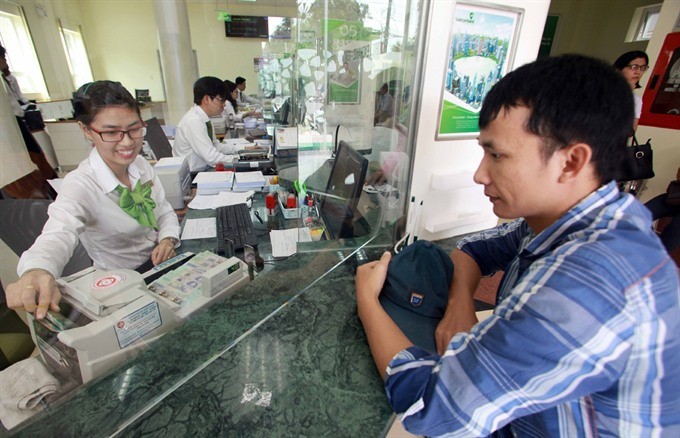
Last week, minister and chairman of the Government Office Mai Tien Dung said credit growth of the entire banking system in Q1 hit a six-year high of 4.86 percent.
Thanks to high credit growth in Q1, several banks reported profits of thousands of billions of dong during the period.
However, lending contributed significantly to the revenue and profits of commercial banks, including large-sized ones such as BIDV, Vietinbank and Vietcombank.
BIDV, Vietinbank and Vietcombank earned the highest revenue of VND6.8 trillion (US$298.2 million), VND6.16 trillion and VND5.27 trillion, respectively, from lending in the first quarter.
Earning a profit of more than VND2.7 trillion in Q1, Vietcombank also posted the highest profit in the entire banking system, up 18 percent year-on-year.
In addition, the three banks had the highest outstanding loans, accounting for 62 percent of the total outstanding loans of the entire banking system.
For small banks, interest rates from the credit segment accounted for 80-90 percent, even compensating other unprofitable business activities.
LienVietPostBank, for example, reported net income margin of 70 percent, or VND1.25 trillion. Thanks to the rise, the bank’s pre-tax profit in Q1 rose 7 percent to VND469 billion after offsetting losses of some other services.
According to experts, the group of small-sized banks has always suffered the pressure on increasing deposits rates to have enough capital source for lending. Therefore, lending rates are unlikely to decrease as the target of the central bank.
The difference between lending rates and deposit rates in banks declined dramatically in the past three years and was much lower than regional countries.
The smaller the difference between deposit and lending rates, the larger is the profit margin of banks. As a result, they have little motivation to reduce lending rates. Therefore, currently the new and sustainable direction for banks is to raise revenue from non-credit activities.
Previously, Deputy Prime Minister Vuong Dinh Hue directed the banking sector in general and Vietcombank in particular to take the lead in raising revenue proportion of non-credit banking services.
In the future, banks need to boost retail activities and personal services. The development of non-credit services will be the most effective way to change the structure of banks’ business operation results, especially in the context that lending services have many potential risks and interest rates remain under pressure.
























